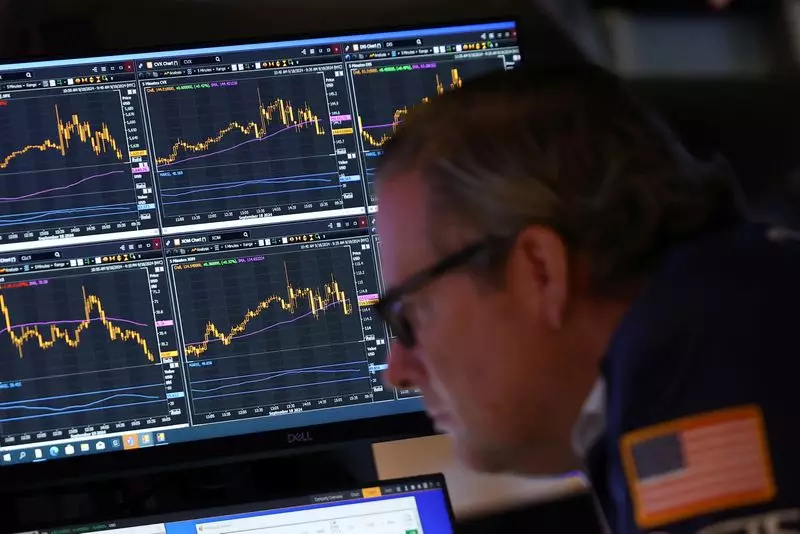The landscape of U.S. exchange-traded funds (ETFs), particularly those focusing on dividend-yielding stocks, is witnessing significant transformations influenced by recent monetary policies and market sentiments. September saw the Federal Reserve initiate its first interest rate cuts since 2020, marking a crucial turning point for investors seeking reliable income streams in the current financial climate.
In a striking display of confidence, dividend ETFs attracted approximately $3.05 billion in September alone. This surge is impressive, especially when considered against the backdrop of monthly averages totaling around $424 million from earlier in the year. These funds are becoming increasingly appealing to investors, particularly those who are anxious about the prospects of diminishing yields—an occurrence likely as the Fed continues on its path of rate reductions. Financial strategists believe this shift in monetary policy is prompting a migration of capital toward dividend-generating investments, enhancing their attractiveness as stable income sources.
The rise in interest for these funds is undeniably connected to broader economic trends. Investors are responding to the anticipated declines in returns from traditional income-generating sources, which leads them to seek out alternative options that not only promise greater reliability but also enhance their overall investment portfolios. Nick Kalivas, from Invesco, notes that the adjustment in U.S. monetary policy is creating a fertile ground for dividend-yielding assets, allowing them to flourish amidst broader shifts in economic forecasts.
Challenges Amid Rising Treasury Yields
However, the current enthusiasm may face headwinds. Recently, benchmark 10-year Treasury yields have shot up to their highest points in two months, showing signs of a resilient American economy—one that might not require further aggressive rate cuts by the Fed. Market observers like Josh Strange, president of Good Life Financial Advisors, suggest that renewed interest in dividend stocks is also a response to inflated tech valuations and general market conditions. With the S&P 500 trading at about 21.5 times future earnings estimates—considerably above its historical average—many investors are feeling the constraint of overvalued assets.
The concentration of market momentum around a select few tech giants, particularly in the context of artificial intelligence (AI) advancements, has prompted investors to shift their focus toward more diversified sectors where dividends provide not just income but strategic growth potential. By pulling capital from high-risk technology investments, market participants can enhance their portfolios’ stability while positioning themselves for future growth through strategic dividend bets.
Dividend ETFs are not limited to traditional energy and financial sectors; they also encompass a wide array of industries providing dividends across the spectrum. Companies like Chevron, JPMorgan Chase, and Exxon Mobil are mainstays in the dividend ETF universe. However, firms in pharmaceuticals and even retail, such as Procter & Gamble and Home Depot, likewise play crucial roles in these portfolios. Their inclusion indicates that investors are looking for resilient companies capable of sustaining—and ideally increasing—their payouts over time.
Sean O’Hara of Pacer ETFs emphasizes that choosing high dividend ETFs necessitates a careful examination of the underlying companies. It’s crucial for investors to balance the search for high yields with the ownership of fundamentally sound companies. Stocks with robust cash flows are more likely to enhance their dividend payouts without compromising their financial health or operational viability.
Efforts to mitigate risks associated with investing in dividend stocks have led to strategic approaches like the Pacer US Cash Cows ETF, which invests in companies boasting substantial free cash flows. With significant inflows of $7.1 billion in the last year, such funds point to a growing trend focused on sustainable profitability rather than mere high dividends.
As we move through an uncertain economic climate shaped by shifting interest rates and market valuations, the future of dividend ETFs remains intriguing. The growing inflow of capital signals a robust interest among investors seeking dependable income streams. However, it remains to be seen whether higher Treasury yields will dampen this enthusiasm. For those navigating this evolving investment landscape, a critical analysis of both the returns and underlying fundamentals will be vital in achieving long-term financial health. Investors will need to remain vigilant and adaptable, ensuring that their portfolios can weather economic fluctuations while still capitalizing on opportunities presented by dividend-yielding investments.

